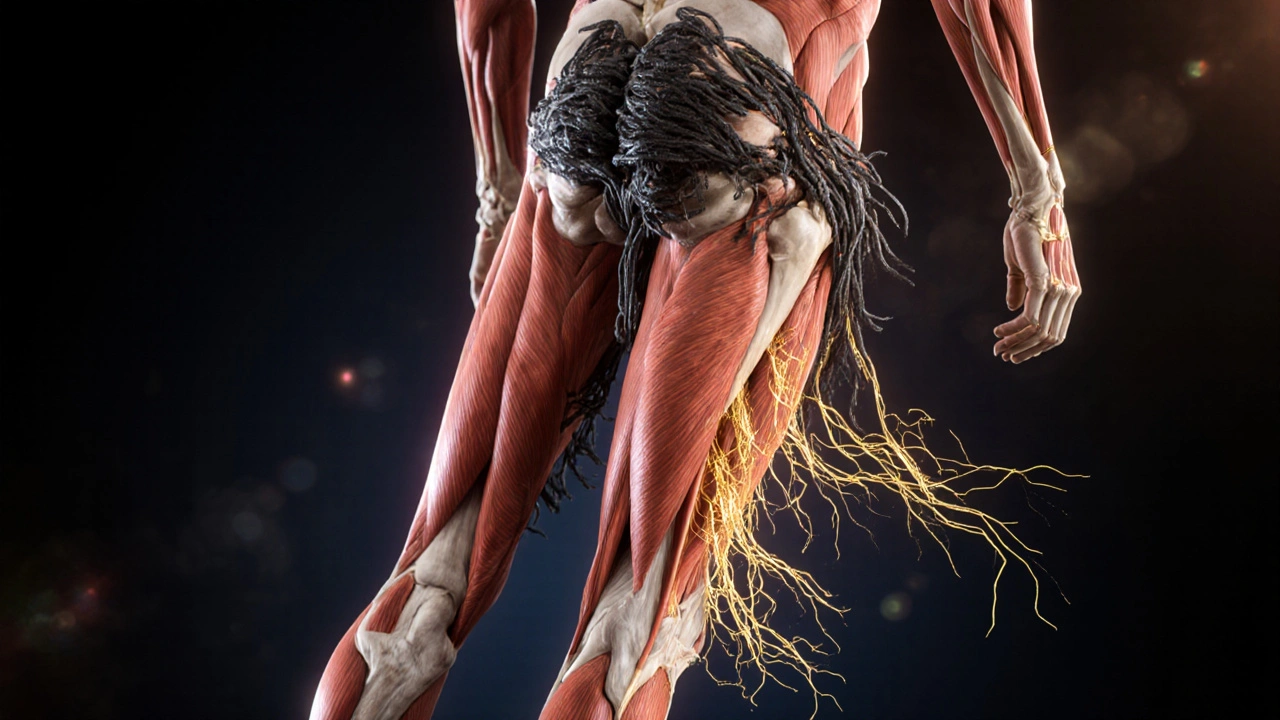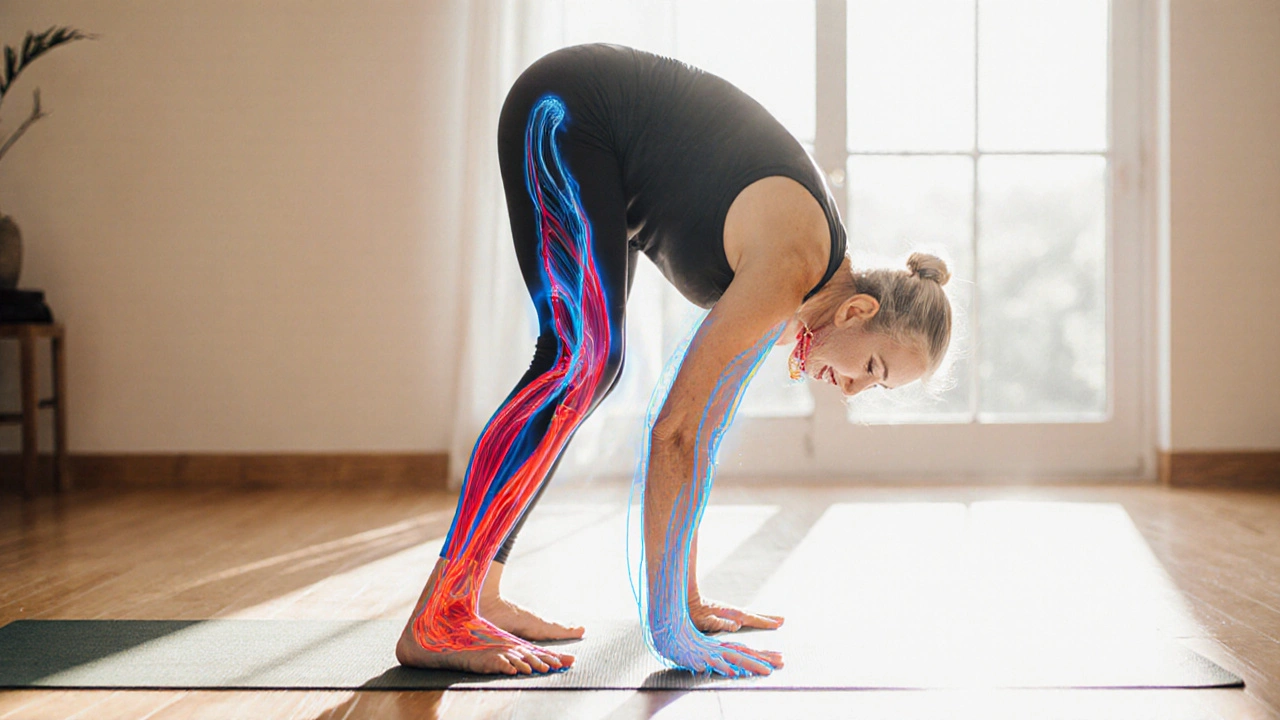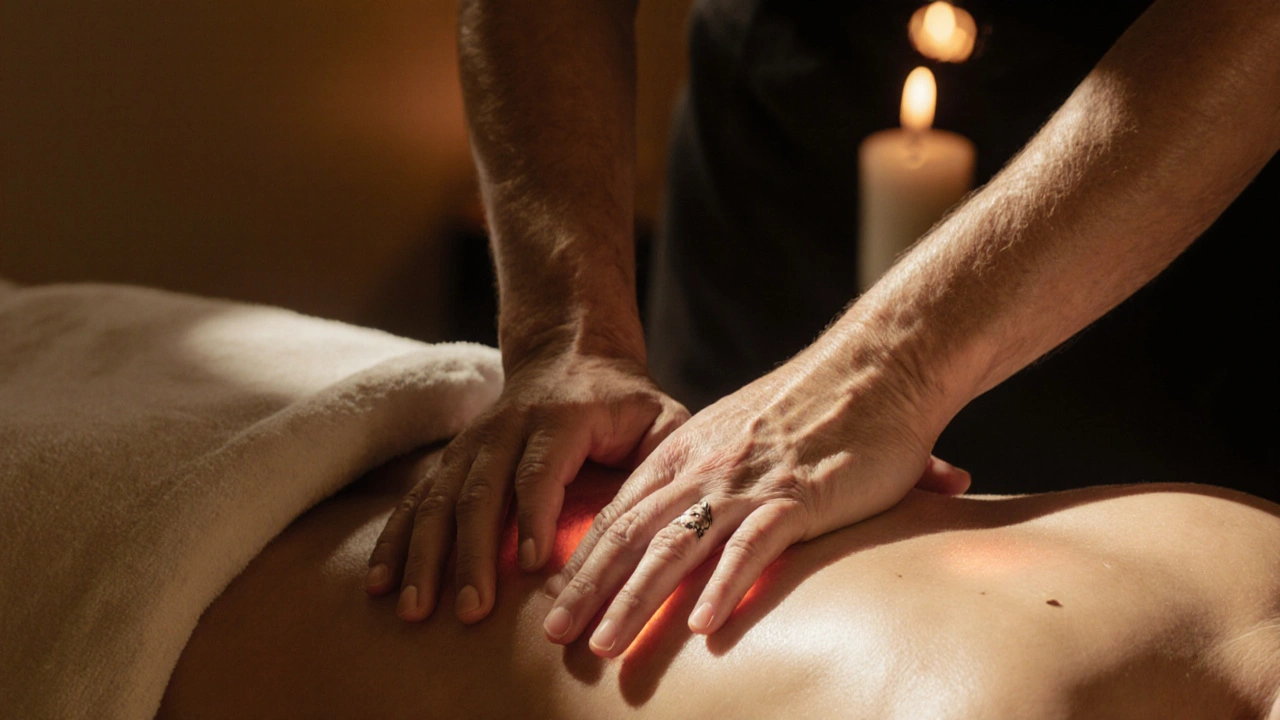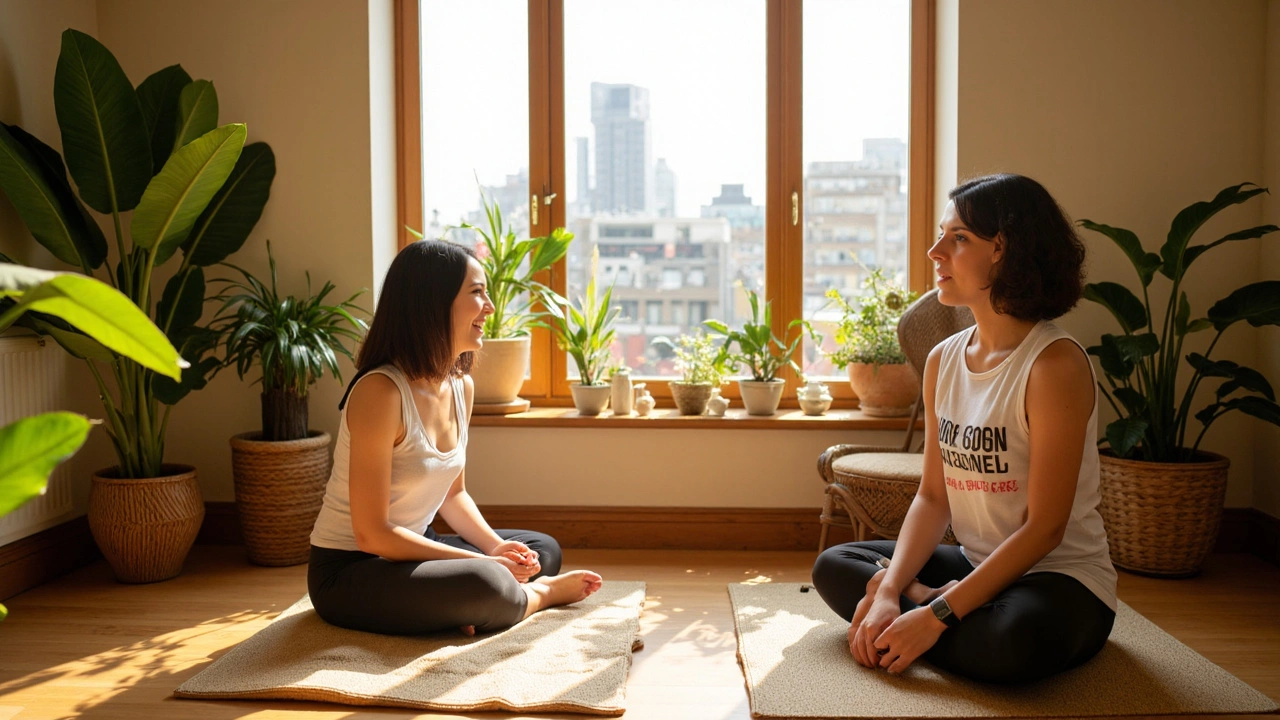Deep Tissue Massage: How It Boosts Flexibility and Releases Chronic Tension

Ever felt like your body is locked in place-like your hamstrings won’t stretch, your shoulders stay tight even after yoga, or your lower back aches no matter how much you roll around on a foam roller? You’re not broken. You’re just holding onto years of stress, movement patterns, and old injuries buried deep in your muscles. That’s where deep tissue massage comes in-not as a quick fix, but as a targeted tool to unlock real, lasting flexibility.
What Deep Tissue Massage Actually Does
Deep tissue massage isn’t just "more pressure." It’s a precise technique that targets the deeper layers of muscle and connective tissue, called fascia. While Swedish massage glides over the surface to relax you, deep tissue works like a sculptor-slow, deliberate strokes that follow the direction of muscle fibers to break up adhesions, or "knots," that form from overuse, injury, or poor posture.
These adhesions don’t just hurt. They restrict movement. Think of them like dried glue between muscle fibers. When they bind together, your muscles can’t slide the way they should. That’s why you might feel stiff even if you’re strong. A 2022 study in the Journal of Bodywork and Movement Therapies found that participants who received weekly deep tissue sessions for six weeks improved their hip flexion by an average of 22%-without doing a single stretch.
It’s not magic. It’s physics. The pressure and friction from deep tissue work literally reorganizes the collagen fibers in your fascia, making them more pliable. Your body starts to remember how to move freely again.
Why Flexibility Isn’t Just About Stretching
Most people think flexibility means touching their toes. But true flexibility is about control, not contortion. You can be flexible and still weak. You can be strong and still stiff. Real mobility comes when your muscles can lengthen and contract smoothly through their full range.
Stretching alone won’t fix deep restrictions. If your piriformis muscle is glued to your sciatic nerve from sitting all day, no amount of pigeon pose will release it. That’s where deep tissue massage steps in. It breaks the physical barriers holding your muscles back, so when you stretch afterward, you’re not fighting against locked tissue-you’re building on a foundation of freedom.
Think of it like this: stretching is like trying to open a stuck door by pushing harder. Deep tissue massage is like lubricating the hinges first.
Who Benefits Most from Deep Tissue for Flexibility
You don’t have to be an athlete to need this. But certain people see the biggest gains:
- Office workers with tight hips and rounded shoulders from hunching over desks
- Runners with chronic IT band tightness or plantar fasciitis
- People recovering from injuries-especially those with scar tissue buildup
- Those with chronic pain like fibromyalgia or lower back stiffness
- Anyone who’s tried stretching for months with little progress
One client I worked with, a 52-year-old teacher, couldn’t bend down to tie her shoes without pain. She’d been doing yoga for five years. After three deep tissue sessions focused on her glutes, hamstrings, and lower back, she could touch her toes. Not because she stretched more. Because the tissue that had been stuck for decades finally released.
What Happens During a Session
A good deep tissue massage doesn’t hurt-but it does feel intense. It’s not about pain tolerance. It’s about communication.
The therapist starts with lighter strokes to warm up the area, then uses fingers, thumbs, elbows, or forearms to apply sustained pressure. They’ll work slowly, often holding pressure for 20-30 seconds at a time to let the tissue respond. You might feel a burning or deep ache, but it should never be sharp or shooting. If it is, speak up.
They’ll focus on key areas:
- Lower back and glutes
- Hamstrings and calves
- Shoulders and upper traps
- Neck and jaw
Each area is treated with intention. For example, tight hip flexors often stem from sitting too long. The therapist won’t just press on the front of your hip-they’ll trace the muscle all the way to its origin at the pelvis and release the entire chain.

How Often Should You Get It
One session won’t undo years of tension. But you’ll feel a difference after just one.
For most people:
- Start with weekly sessions for 3-4 weeks to break through major restrictions
- Then switch to biweekly for maintenance
- After 2-3 months, monthly sessions are enough to keep things moving
Some athletes or people with chronic conditions may need more frequent sessions. The key is consistency-not intensity. A 30-minute session done every two weeks will outperform a brutal 90-minute session once a month.
What to Do After Your Session
Deep tissue massage is like a workout for your connective tissue. Your muscles need time to adapt.
Right after:
- Drink at least 16 ounces of water to help flush out released toxins
- Take a warm bath or shower-heat helps relax the tissue further
- Don’t stretch aggressively. Gentle movement like walking is better
Within 24-48 hours:
- Start light stretching-hold each stretch for 30-45 seconds, no bouncing
- Use a foam roller gently on areas that feel tender
- Pay attention to posture. If you slouch again, the tightness will come back
Many people feel sore for a day or two. That’s normal. It’s your body repairing and reorganizing. If you’re in pain longer than three days, talk to your therapist. You might have gone too deep too fast.
Deep Tissue vs. Other Massage Types
Not all massages are made equal. Here’s how deep tissue stacks up:
| Massage Type | Pressure Level | Best For Flexibility? | How It Helps |
|---|---|---|---|
| Deep Tissue | High | Yes | Breaks adhesions in deep fascia and muscle layers |
| Swedish | Light to medium | No | Relaxes surface muscles, improves circulation |
| Sports | Medium to high | Yes, for athletes | Targets specific muscles used in sport, reduces recovery time |
| Hot Stone | Light | No | Relieves stress, warms tissue, but doesn’t break adhesions |
| Thai | Medium | Yes, with stretching | Combines compression with passive yoga-like stretches |
Deep tissue wins for flexibility because it goes where other massages don’t. Thai massage adds stretching, which is great-but if the tissue is too tight, the stretch won’t stick. Deep tissue clears the path first.

Red Flags to Watch For
Not every therapist knows how to do deep tissue right. Watch out for:
- They use their knuckles or fists like they’re pounding a drum
- They ignore your feedback and keep going even when you say it’s too much
- They promise to "fix" you in one session
- They don’t ask about your injury history or daily habits
A good therapist listens. They adjust pressure. They explain what they’re doing and why. If it feels like a brute force session, walk out. You’re not paying for pain-you’re paying for precision.
Can You Do It Yourself?
You can’t fully replicate a professional deep tissue massage at home. But you can support it.
Tools that help:
- Theragun or similar percussion massagers (use on low setting, 1-2 minutes per area)
- Massage balls (lacrosse or tennis ball for feet, glutes, upper back)
- Foam rollers (slow rolls, not fast bouncing)
But here’s the truth: self-massage is maintenance, not correction. It keeps things from getting worse. It doesn’t fix deep-seated restrictions. That’s where a trained therapist makes the difference.
The Bigger Picture: Flexibility as a Lifelong Skill
Flexibility isn’t something you lose because you’re aging. You lose it because you stop moving well. Sitting, slouching, repetitive motions-they all pile up. Deep tissue massage isn’t a luxury. It’s preventative care for your movement system.
Think of it like brushing your teeth. You don’t wait until you have a cavity to clean them. You do it daily to prevent damage. Same with your muscles. Regular deep tissue sessions, combined with mindful movement, keep your body working the way it was designed to.
By 50, most people move like they’re made of rusted hinges. But with the right care, you can move like you’re still 25. Not because you’re young. Because you took care of the machine.
Does deep tissue massage hurt?
It should feel intense, not painful. A deep ache is normal. Sharp, burning, or shooting pain is not. Always communicate with your therapist. They can adjust pressure or technique if something feels wrong.
How long until I see results for flexibility?
Most people feel looser after one session. Lasting changes take 3-6 sessions, depending on how long the tension has been there. Consistency matters more than intensity.
Can deep tissue massage help with back pain?
Yes, especially if the pain comes from tight muscles in the lower back, glutes, or hamstrings. It doesn’t fix herniated discs or nerve damage, but it often removes the muscle tension that makes those conditions worse.
Is deep tissue massage safe during pregnancy?
Yes, but only with a therapist trained in prenatal massage. Avoid deep pressure on the abdomen, inner thighs, and certain pressure points. Always inform your therapist you’re pregnant.
Should I stretch after a deep tissue massage?
Yes-but gently. Wait at least 24 hours before doing intense stretching. Light movement like walking or slow yoga is ideal. Stretching too soon can irritate the tissue that’s just been released.
Deep tissue massage isn’t about being tough. It’s about being smart. If you want to move better, feel lighter, and stay active longer, this isn’t optional. It’s essential.



